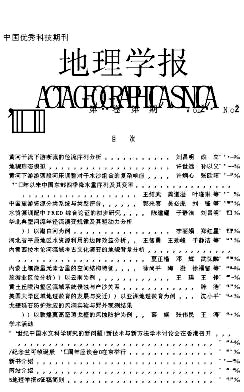XU Shang ping, TAO Shu, XU Fu liu, CAO Jun
Soil samples representing various soil horizons (A, B, and C) were collected from 349 sites in Inner Mongolia Autonomous Region and the total contents of 10 trace elements, namely copper, lead, zinc, cadmium, nickel, chromium, mercury, cobalt, vanadium and manganese were measured with atomic adsorption spectrophotometry. Preliminary data analysis showed that the concentration of each element conforms to logarithmic normal distribution, therefore, logarithmic transformation was performed in order to reduce the possible scale effect. Factorial Kriging Analysis (FKA) was then applied to analyze the spatial correlation pattern among various trace element contents. As Principal Component Analysis (PCA) showed that the primary two components account for the main source of variance, a series of rotation methods have been used and spatial correlation patterns of these two primary factors under different rotation schemes were compared with respect to spatial orthogonality. Since rotations increased significantly the spatial dependency between the two components in this case, the principal components without any rotation were deployed as the basis of FKA. It is further demonstrated by computing and comparing partial β values that parent materials and soil class are the primary factors controlling the concentrations and spatial distribution patterns of the trace elements in the soils of the studied area. The variogram of the primary factor, which mainly represents the effect of parent materials, consists of nugget effect and two spherical models with ranges of 200 and 400 km, respectively. A linear model with a 1 000 odd km range and nugget effect, on the other hand, constitutes the variogram model of the second component, which can be referred to as the representative of soil class. Based on the variogram model of the principal components, the variogram of the content of each element is therefore modeled by manual coefficient adjustment under the constraint of Schwarz inequality. Although the influence of the principal factors varies among the spatial distribution patterns of different elements, viewed from a comprehensive perspective and compared with the effect of parent materials, the role of soil class is much weaker. The variograms of the contents of one element in different soil horizons share the same primary pattern, while there exists such a trend that the influence of parent materials is increasing from top to bottom soil. Under the assumption that the theoretical covariance between experimental errors of different elements is zero, by checking carefully the coefficient matrix, it was concluded that the nugget effect in the variogram models of most of the trace elements was mainly composed of small range variation except for lead, cadmium and mercury. The effect of experimental errors of the latter three elements seems to be much more noticeable. Spatial correlation analysis was preformed to examine the relative correlation among the trace elements at various scales defined by the variogram models of principal factors. The result demonstrates that the concentrations of copper, zinc, nickel, chromium, cobalt, vanadium and manganese showed significant positive correlation, while lead, cadmium and mercury are more or less independent. This spatial correlation did not show any significant variations from top to bottom soil, or from small to large scale. Considering the fact that the parent material is the primary influencing factor of soil trace element contents for our case, the ion radii of each trace element were examined and compared with each other. As the radii of mercury, lead and cadmium are remarkably larger than those of the other elements, isomorphism during the endogenic action, which is controlled by the radius of ion of the trace elements, provides the most possible interpretation.
